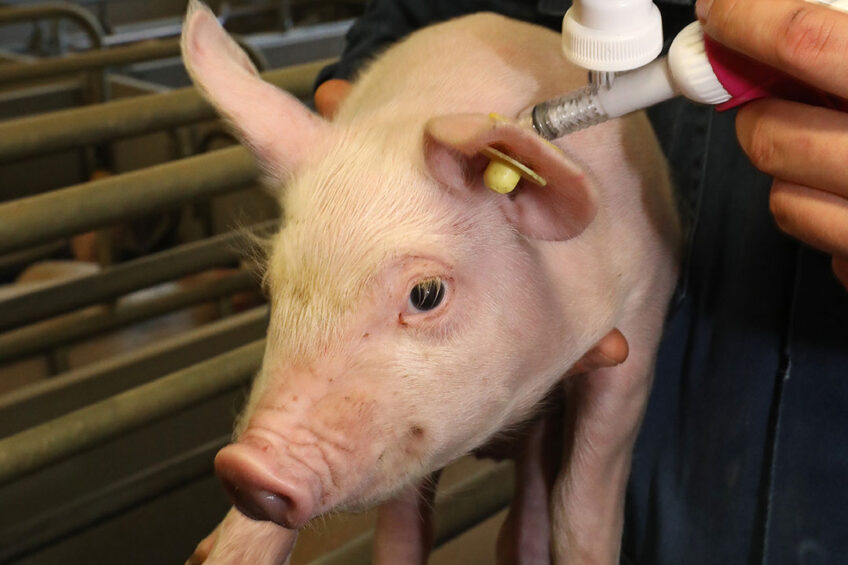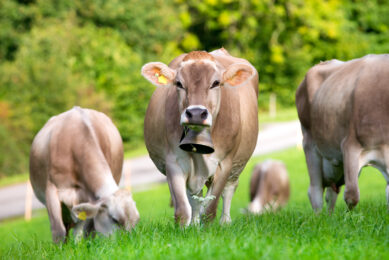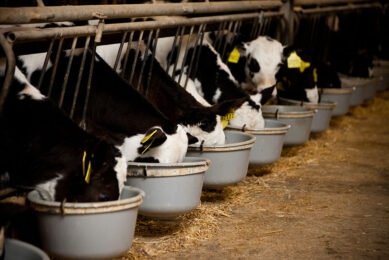Lawsonia: An innovative solution to the invisible enemy

Lawsonia intracellularis causes major economic loss to the swine industry. In the UK, ileitis causes losses between £2- 4 million (€ 2.2- 4.4 million) per year, with symptoms including diarrhoea, reduction in average daily weight gain (ADWG), increased FCR and mortality.
Merck Animal Health has conducted recently a series of field trials in EU aiming at assessing the efficacy of its new vaccine against porcine ileitis (the disease caused by Lawsonia intracellularis): Porcilis Lawsonia. The results of these trials comparing Merck’s vaccine versus competitor vaccines and/or use of antibiotic treatments for Ileitis, were discussed during the third and last live session of the High Quality Pork 2020 event (HQP20).

The UK
The farm had a history of PHE, a clinical form of ileitis caused by L. intracellularis, with an average related mortality of 1-3% and a time to empty the finisher pig pens of 4-5 weeks. The cost of treating ileitis with antibiotics was 40p/pig (€ 0.44 / pig).
In indoor farrow-to-finish units with high standards of hygiene, 240 sows were housed, resulting in 30 piglets weaned per year. All piglets were vaccinated at 3 weeks of age with Porcilis Lawsonia .
To date, 4 batches of vaccinated piglets have been through the trial. This has resulted in:
- a reduction in mortality from as high as 3% to 1.5%, which is equivalent to £2/pig (€ 2.22 / pig),
- a reduction in finishing time of 5-7 days,
- an improvement in pen clearance of 1-2 weeks.
The Netherlands
Trial 1 – A finisher farm with 2,050 fatteners
This farm had a history of PHE, resulting in a high mortality rate of 3.6%. 2,050 fattener pigs were divided into vaccinated and unvaccinated control groups. The vaccinated pigs received Merck’s vaccine. The results shown are for the first batch of slaughtered vaccinated pigs.
The farm recorded 0% incidence of PHE cases, thereby removing the need for antibiotic related to diarrhoea use in pigs. The vaccinated group also had a reduction in mortality of 39% (from 3.60 to 2.20), equivalent to a saving of € 1.09/pig. There was reduction in FCR of 3.45% for the vaccinated group (from 2.90 g/day to 2.80 g/day) which is equivalent to € 2.36/pig. An increased in ADG of 7.90% was confirmed for the vaccinated pigs (from 785 g/day to 847 g/day), equivalent to more than € 1.50/pig.
Trial 2 – A finisher farm with 3,800 fatteners
This farm was using liquid feed for its fatteners. It had a history of PHE, which it had previously tried to control with L. intracellularis oral vaccination.
This trial studied the effect of changing from an oral vaccine to vaccination with Merck’s IM vaccine. The results shown are for the first batch of IM vaccinated pigs to be slaughtered. The IM vaccination resulted in a reduction in the usage of antibiotic Tylosin by 87% (from 7.0 to 0.9 Defined Daily Dose). Mortality in the IM vaccinated group reduced with 26% (from 2.65 to 1.95), equivalent to a saving of € 0.55/pig. Data to date (unvalidated) support that the IM vaccinated pigs had an increased ADG of 3.36% (from 832 g/day to 860 g/day).

Denmark: Weaner farm
A weaner farm had previously vaccinated piglets with oral L. intracellularis vaccine. This study compared the effect of oral vaccination versus Porcilis Lawsonia to protect against ileitis. 6,000 piglets were moved to the weaner farm. The weaners were vaccinated with either the oral or IM vaccine. The average weight of the piglets at weaning was 7.3kg and the average number of days in stable was 48. A total of 3,600 piglets were then transferred to a finisher farm. The results can be sub-divided into weaners and finishers as follows:
Weaners:
- IM vaccination group had increased ADG of 13.26% compared to the oral group (from 543 g/day to 615 g/day)
Finishers:
- A decrease in the need for oral antibiotic medication was measured in the IM vaccine group, from twice/day to once/day.
- Medicated treatment was required for a shorter period of time in IM vaccine group (1 day compared to 4 days treatment)
Trials in Spain
A total of 3 trials were conducted; 2 were performed at entrance to the fattening unit and 1 trial prior to weaning. Vaccination was with Porcilis Lawsonia either administered solely or in combination with Porcilis PCV Mhyo. The results were compared to unvaccinated controls or unvaccinated-medicated controls.
Trial 1 – Entrance to the fattening unit: IM vaccine versus unvaccinated controls
Landrace x LW pigs intended for fatty pig production. IM vaccination of the fatteners with Merck’s Lawsonia vaccine.
7 months old at slaughter with an average weight of 125kg.
- The vaccinated group had a decrease in FCR compared to the controls of 6% (from 2.666 to 2.508)
- IM vaccination provided a return on investment of 2.0.
- IM vaccination provided a return on investment of 2.0.
Trial 2 – Prior to weaning: Combination of Ileitis and PCV M Hyo Merck vaccines versus unvaccinated controls
The trial was carried out on Iberian x Duroc pigs intended for special production. The piglets were divided into 2groups, either vaccination with Merck’s Lawsonia vaccine and Porcilis PCV Mhyo vaccines at 4 weeks of age, or unvaccinated controls. Piglets were from a single origin but raised in 2 different fattening farms, both of which have ileitis infections. Slaughter was at a minimum of 10 months of age. The vaccination resulted in a reduction in mortality of 32% compared to the control group and in a reduction in the average cost of antibiotics per pig of 32%.
Trial 3 – Vaccination prior to entering the fattening unit: Vaccinated vs unvaccinated- medicated controls
Landrace x LW pigs for growing and finishing were used in this trial. The farm had a history of ileitis. The pigs were vaccinated prior to entering the fattening unit, the unvaccinated control group were medicated with antibiotics and feed additives. Pigs were an average weight of 120kg at slaughter. The results showed the vaccinated group had a lower cost of disease control compared to the unvaccinated-medicated group of € 0.60 per pig.
Protection against L. intracellularis
The results of these field trials support the previously published data by Jacobs et al. 2019, reinforcing that the inactivated vaccine Porcilis Lawsonia, either as standalone, or in mixed use with Porcilis PCV M Hyo, induces significant protection against L. intracellularis. This has been demonstrated by improved ADG and FCR, reduction of mortality, as well as reduction in use of antibiotics.
On-demand versions of the HQP20 seminars can be found in the “Merck Animal Health – Swine Team” YouTube channel.
Author:
Merck Animal Health on behalf of swine professionals from UK, NL, DK, and ES
Join 13,000+ subscribers
Subscribe to our newsletter to stay updated about all the need-to-know content in the dairy sector, two times a week.
 Beheer
Beheer





 WP Admin
WP Admin  Bewerk bericht
Bewerk bericht